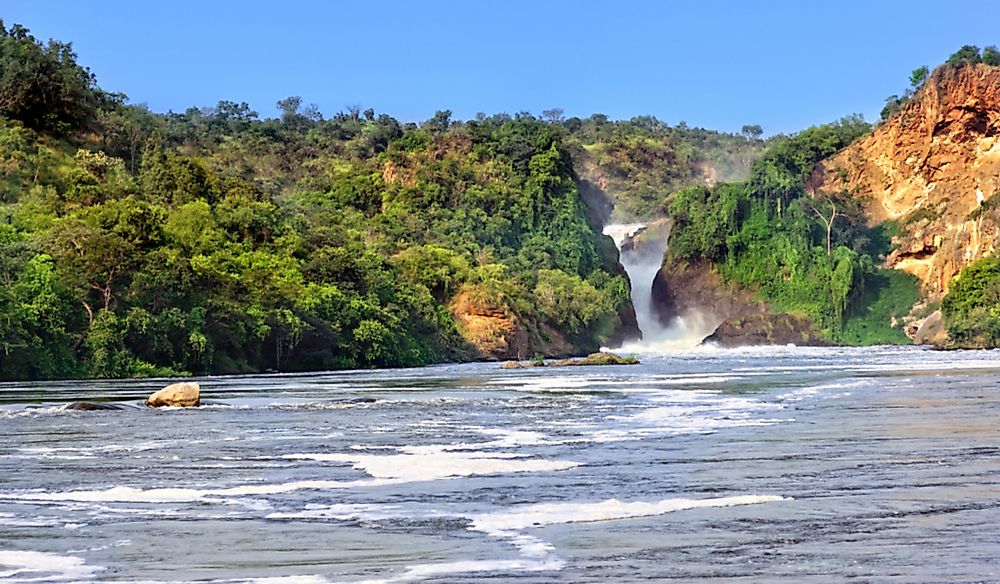What Are The Primary Inflows And Outflows Of Lake Albert?

Lake Albert is an African Great Lake located in Uganda and the Democratic Republic of the Congo (DRC) and is part of the upper Nile system. The lake has a length of about 100 miles, a width of 19 miles, and a maximum depth of 168 feet. Lake Albert is referred to by the local population, who are primarily Banyoro and Batooro people, as Mwitanzige. British explorers Samuel Baker and Sass Flora were the first Europeans to discover the lake in 1864, and named it after the recently deceased Prince Albert, who was the husband of Britain's Queen Victoria. The colonialists used the lake for shipping purposes, especially for lake and river steamers to access other regions in Africa. During the twentieth century, the lake was also temporarily named Lake Mobutu Sese Seko by Zairian President Mobutu Sese Seko. Lake Albert receives its waters from the Victoria Nile, while the Albert Nile drains its waters as its primary outflow.
Primary Inflow: Victoria Nile
The Victoria Nile is the primary inflow of Lake Albert. The river forms the upper section of the greater Nile River and has a length of about 300 miles. Beginning at its mouth, which is located north of Lake Victoria, the river runs west of the town of Jinja, flows downstream, away from the Nalubaale Power Station, and passes over the Bujagali Falls, where the Bujagali Power Station is located. The Victoria Nile is referred to as the White Nile in Uganda, as it comes from Lake Victoria through Lake Kyoga before it enters Lake Albert. As the Victoria Nile approaches Lake Albert, its width is reduced to 23 feet at Murchison Falls, which marks the inlet to the East African Rift. The river then empties into Lake Albert in the DRC.
Primary Outflow: Albert Nile
The Albert Nile is the primary outflow of Lake Albert and is sometimes known as the Mobutu Nile. It drains from Lake Albert at the north and separates the region known as the West Nile sub-region from the rest of Uganda. At its inlet in Nebbi District, a sole bridge passes over the river, and the river is mostly navigated using a canoe or small boat. It flows north of the mouth of the Victoria Nile for around 130 miles, to Nimule at the South Sudan border, where it becomes referred to as the Mountain Nile or the Bahr-al-Jabal. As the Albert Nile joins Lake No in South Sudan, it becomes the White Nile, and then flows north into Sudan, where it eventually meets the Blue Nile.
Oil Discovery at Lake Albert
Large oil reserves have been discovered in Lake Albert. Major oil expeditions in the Lake Albert region have estimated a substantial amount of oil within the lake’s basin, which according to Heritage Oil and Tullow Oil, could be the largest onshore reserve anywhere in sub-Saharan Africa for the next two decades. The oil reserves are estimated at 6.5 billion barrels, which could potentially transform Uganda's economy.











